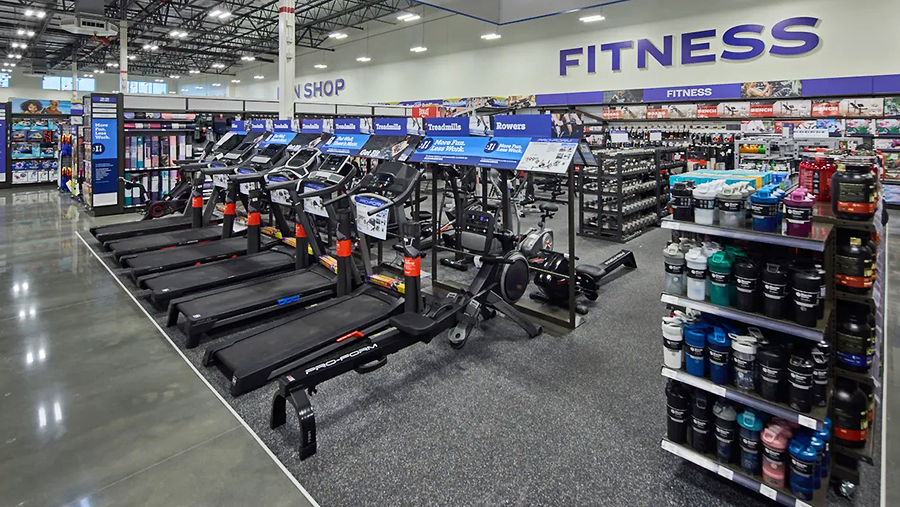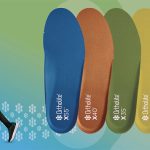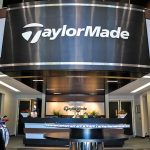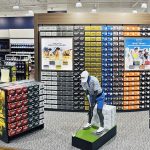Shares of Academy Sports and Outdoors, Inc. closed up $4.63, or 9.3 percent, to $54.57 Thursday as second-quarter earnings topped analysts’ estimates and the retailer reiterated its guidance for the year. Academy officials said sales steadily improved throughout the second quarter as customers responded to its message around value and newness.
On an analyst call, CEO Steve Lawrence said that while Academy was “not happy” to show a 7.5 percent same-store decline in the second quarter, results were in line with first-quarter trends and previously provided guidance while showing steady improvement each month.
“What was encouraging was that unlike Q1, when we saw the business decelerate as we moved through the quarter; in Q2, we saw steady improvements in both sales and margin rates with each month being successively better,” said Lawrence. “Our belief is that we can continue to build on this momentum as we progress for Q3 into the holiday selling season in Q4.”
The reiteration of full-year guidance also comes as several other retailers, including Dick’s Sporting Goods, Foot Locker, Macy’s, and Target, reduced their outlooks for the year as they reported second-quarter results.
Academy maintained its sales guidance and slightly increased its EPS outlook due to aggressive share repurchase actions taken during the quarter. Academy had slightly lowered its targets for the year in reporting first-quarter results.
In the second quarter ended July 29, sales declined 6.2 percent to $1.58 billion, in line with analysts’ consensus estimates. The same-store sales decline of 7.5 percent compared with a decline of 6.0 percent in the year-ago quarter. The decline reflected an 8.3 percent decline in transactions amid a high-single decline in traffic that was partially offset by a 0.8 percent increase in ticket size. Comps improved during each month of the quarter.
Gross margins improved 30 basis points to 35.6 percent. SG&A expense increased 3.9 percent to $352.5 million, or to 22.3 percent of sales from 20.1 percent a year ago.
Net income declined 16.8 percent to $157.1 million, or $2.01 a share, from $188.8 million, or $2.22, a year ago. On an adjusted basis, profits were off 15.4 percent to $163.6 million, or $2.09 a share, from $193.5 million, or $2.28, a year ago, but was ahead of Wall Street’s consensus estimate of $2.03.
Sports & Recreation Tops Category Performance In Q2
By division, the best performer was Sports & Recreation, which delivered a 2.7 percent sales decrease in the second quarter. Sporting goods equipment, outdoor cooking and outdoor furniture all performed well during the quarter, although fitness equipment and bike categories “continued to be tough,” said Lawrence.
Apparel was the second-best performing division, down 3.7 percent. Lawrence said, “We continue to see solid performance out of the men’s and youth businesses as well as in the licensed apparel area. Nike also continues to perform well for us, along with our private label business. The women’s businesses are more challenging for us. As we move forward, we’re very focused on getting our women’s active business back on track.”
Footwear saw a 4.5 percent sales slide. Strength continued in casual footwear, driven by brands such as HeyDude, and work footwear, led by its Brazos private label brand. The cleated business was also strong, benefiting from a much better inventory position versus prior-year levels.
The worst-performing division was Outdoor, falling 12.2 percent. The category performance improved sequentially versus a decline of 15 percent seen in the first quarter but was still below Academy’s expectations.
Better-performing categories within the Outdoor segment include fishing and camping. Hunting remained the most challenged with continued softness in both ammunition and firearms. Ammunition and firearms both continue to perform well above 2019 levels but continue to decline from peaks seen in recent years. Lawrence said, “As we move forward, we expect to see the declines in these categories moderate as we start to lap softer comparisons from last year.”
Consumers Seek Value And Newness
Overall, Lawrence said the key consumer themes, including an emphasis on value and newness, called out on the first-quarter call continued into the second quarter.
“Customers continue to gravitate towards value on one end of our assortment, demonstrated by an increase in the penetration of private brand sales,” said Lawrence. “At the same time, customers are also focusing on new and innovative products such as Bogg Bags and Oofos recovery slides, which in many cases were not value items.”
Bigger-ticket items with long replacement cycles, many of which were “surge categories” during the early stages of the pandemic, “continue to be challenged,” added Lawrence.
Lawrence said Academy is also seeing a consistent pattern of customers being more active and aggregating their purchases “in the natural shopping time periods,” such as Mother’s Day, Memorial Day, Father’s Day and the Fourth of July with “lull” periods taking place outside those key shopping events. Lawrence said, “We’re continually adjusting our assortment and future buys, along with our promotional efforts, to align with these trends. Customers will continue to see us lean into our position as the value leader in our space by expanding our everyday value offerings while also leveraging strong promotional efforts during the key shopping moments on the calendar.”
On newness, Lawrence pointed to a few new initiatives being rolled out for the second half, including bringing LL.Bean’s apparel and footwear, including the Bean Boot, to its selling floor.
As reported by SGB Media on August 30, Academy has become one of the select U.S. wholesale accounts for LL.Bean. Other larger retailers now carrying the Maine-based outdoor brand include Nordstrom, Staples, Scheels, Dillard’s and Moosejaw, a Dick’s Sporting Goods subsidiary. Lawrence said, “We believe their focus on outdoor apparel and footwear with a Northern sensibility is the perfect complement for our Magellan Outdoors and Columbia businesses which lean more towards fishing in Southern climates.”
Academy also formed a new partnership with Escalade Sports and American Cornhole League (ACL) to become the exclusive seller of ACL boards and bags this fall. Said Lawrence, “With the strong market share we have in all things tailgating, this partnership is a perfect fit for us.”
Also announced on Thursday, Academy is partnering with Fanatics to expand its fan apparel assortments online. Lawrence said the fan business has been a “strong suit for us over the years,” but Academy’s mix has long been anchored on local teams. He added about Fanatics’ partnership, “Our new relationship will allow us to dramatically grow our assortment into service a greatly expanded number of categories, teams and leagues moving forward.”
Gross Margins Drive Profits Above Plan
The better-than-expected profitability in the quarter was helped by the improving gross margin rate, which reached 35.6 percent, up 30 basis points year over year and 180 basis points sequentially versus the 2023 first quarter. The margin improvement year over year was driven by 88 basis points of lower freight costs.
Merchandise margins were down 21 basis points versus last year due to some promotional pressures but a marked improvement over the merchandise margin decline of 110 basis points seen in the first quarter. Carl Ford, who in July was promoted to EVP and CFO, said on his first earnings call, “Our merchandise margins improved sequentially as we’ve benefited from our ongoing efforts to manage inventory through system capabilities, price optimization and localization.”
Shrink Rates Improve Sequentially
Higher shrink reduced margins by 37 basis points but Academy saw a 42 basis points sequential improvement in shrink versus the first quarter due to actions taken to detect and deter losses.
Michael Mullican, who recently transitioned from CFO to president, said Academy’s improving shrink rate versus worsening shrink rates being cited by numerous other retailers, including Dick’s Sporting Goods, is partly because Academy undergoes inventory counts “regularly throughout the year” and is able to adjust in high-shrink locations.
The retailer also works closely with law enforcement and has been able to “intervene and take down some organized crime rings that have helped shrink,” said Mullican. He particularly credited Academy’s in-store staff who have helped by continuing to be “attentive” on selling floors.
Mullican said, “They want to do what they do best and that’s help customers ‘Have fun,’ and the best way to prevent shrinkage is to provide great customer service in the stores. We can do that and provide more labor and more customer service because our stores are significantly more productive than our peers so we can have people in the stores helping customers.”
SG&A Rate Climbs On Growth Investments
The SG&A rate increased by 220 basis points with 80 percent of the increase tied to growth investments to support its long-range plan revealed on its Investor Day this past April. Investments include opening new stores, improving omnichannel capabilities and digital marketing projects. When compared to the first quarter, SG&A expenses were 230 basis points lower as a percent of sales.
Ford said that as noted on its June quarterly call, Academy is aligning its expenses with lowered sales guidance provided with first-quarter results. Examples of areas where Academy is securing cost savings include flexing store and distribution labor hours based on revised sales and inventory receipt expectations, targeted distribution scheduling during non-peak times, and scaling back on projects not aligned with long-term growth strategies or 2023 sales growth.
Long-Term Growth Plan Update
Mullican provided a brief update on Academy’s long-term growth plan, headlined by its goal to open 120-to-140 new stores over the next five years through 2027, expanding its store base by 50 percent in existing and new markets. He noted that all mature stores are profitable with the nine new stores opened in 2022 as a group meeting expectations and positively contributing to EBITDA.
He noted that 2022 was a ”test and learn year” as Academy relaunched expansion efforts after several years. The retailer continues to find that stores in new markets face “longer sales maturity ramps” as it takes time to build brand awareness while stores in existing markets “generally come out of the gate faster.”
Mullican added that despite the challenging economic climate, Academy is able to fund expansion through “existing strong cash flow” with 13 to 14 stores set to open this year. Mullican said, “As of today, we’re only in 18 states. So, we have a large runway for growth in front of us. In addition, with other retailers scaling back their outdoor product offerings, there are many markets that are favorable for market share gains.”
Other major initiatives supporting long-term growth goals include the launch of a new customer data platform (CDP) in July that is expected to significantly improve targeting efforts. Mullican said, “With this new perspective, we will have the ability to create and develop a robust customer portfolio segmented by cohorts, shopping behaviors, outdoor interests, sports fandom, and many other filters. We can use this refined customer data to proactively design highly targeted marketing campaigns tailored to specific customer behaviors and interests. We anticipate that connecting with our customers on this deeper level will drive an increase in traffic conversion rates and loyalty.”
Academy is also implementing a new warehouse management system in partnership with Manhattan as part of its goal to generate 100 basis points of adjusted EBIT margin improvement from its supply chain. One of its distribution centers is expected to be converted to the new system in 2024. Mullican said, “We are also taking other steps to improve supply chain logistics and productivity by implementing consistent processes and procedures, increasing cross docking and multiple deliveries and investing in technology to improve visibility of product flow.”
Inventories Flat Year-Over-Year
Inventories at the close of the quarter were flat to last year in terms of dollars and down 2 percent and units in total. On a per-store basis, units declined 5 percent year over year.
“The team has exhibited a very disciplined inventory management approach through the past couple of years,” said Lawrence. ”We plan to continue to lean into this strength as we move forward. We are confident that our current inventory position is at the right level to support our business and that the content is fresh and forward-facing, which should position us well for the fall and holiday selling seasons.”
2023 Outlook
Academy is reiterating its previous sales and net income guidance for fiscal 2023 while updating its EPS forecast to reflect the share repurchase activity completed in the second quarter. The updated guidance calls for:
- Sales in the range of $6.18 billion and $6.37 billion, same as previous guidance;
- Comparable sales declining in the range of 7.5 percent to 4.5 percent, same as previous guidance;
- Gross margins in the range of 34.0 to 34.4, the same as previous guidance;
- GAAP net income between $520 million to 575 million, same as previous guidance;
- Income Before Income Taxes in the range of $675 to $750 million, same as previous guidance;
- EPS in the range of $6.65 to $7.35, up from previous guidance of $6.50 to $7.20;
- Adjusted EPS in the range of $6.95 to $7.65, up from previous guidance of $6.80 to $7.50;
- Diluted Weighted Average Common Shares of 78.1 million, down from 79.7 million under previous guidance;
- Capital expenditures in the range of $200 million from $250 million, same as previous guidance; and
- Adjusted free cash flow between $400 million and $450 million, same as previous guidance.
Lawrence stressed that the consumer remains “under stress and under pressure.” As noted on its June quarterly call, Academy is responding by highlighting its “position as the value leader in the space” and introducing new offers, including L.L.Bean, “to capitalize on the customer’s desire for newness.”
Academy also expects to start to see some benefits in the second half from better-targeted marketing as a result of its new customer data platform, benefits from investments in enhancing omnichannel functionality as well and a sales boost from 11 to 12 new stores opening this fall.
Lawrence noted that Academy is “a much stronger company than we were before the pandemic” with sales and gross margin rates remaining significantly above 2019 levels due to operational improvements made over the past few years. He added, “Longer term, we believe we have a compelling growth strategy with multiple ways to capture market share and drive growth through new store expansion into adjacent new and existing markets. We have an improving dot-com business with significant upside, and we have the ability to continue to refine and drive more productivity out of our existing store base. Most importantly of all, this growth can be funded from the free cash flow generated by the business while also returning value to our shareholders through dividends and strategic share repurchases.”
Photo courtesy Academy Sports + Outdoors
















